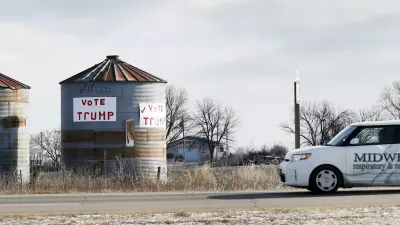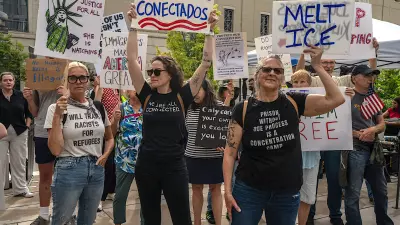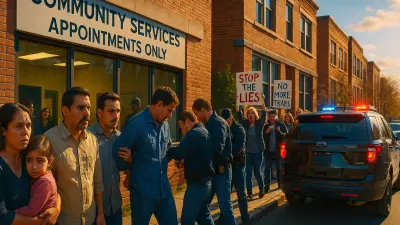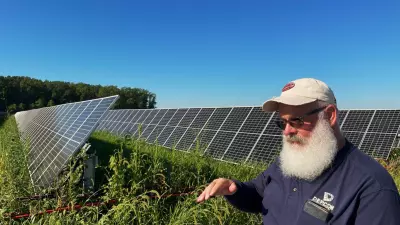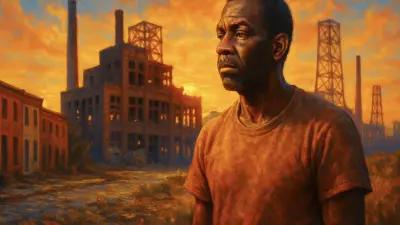In today’s knowledge-driven economy, communities wage what Midland, Michigan, Mayor Maureen Donker described as a “war for talent,” a fight waged by many state and local leaders, as well as Midwest economic development officials.

And for the many former manufacturing-dependent communities dotting the shores of the Great Lakes and sprinkled among the region’s fields and forests, the opportunity to both keep one’s own homegrown “talent” and attract newcomers by offering a community that is less expensive, congested, and hurried, as well as a rich quality of life, is a handhold towards new population and employment growth.
There is good evidence that quality of life and place — like good schools, transportation options, outdoor recreation opportunities — matters more today than traditional “business friendly” measures like low taxes and lax regulation in keeping “talent” at home, and attracting new jobs and new people.
And there are growing signs of some movement of well-educated “talent” — including the important “tech-talent” that is central to business growth in so many emerging sectors — now seeking alternatives to the coastal “hothouses” with their spiraling housing costs, gridlock, dirty and degraded community fabric.
Many Midwest community leaders are looking to seize these opportunities to foster new growth. Particularly advantaged are those whose communities sport a great natural location, like along a Great Lake or riverfront, or are home to one of the many premier Universities in the region that can serve as strong fulcrums for building an innovation-driven economy, as well as enrich the arts, cultural, and entertainment environment.
… for many Midwest metropolitan communities the lingering legacy of racial segregation and divided communities may be off-putting to diversity-seeking talent who can now find the atmosphere of inclusiveness and tolerance they value…
This dynamic appears to be gaining steam, as attractive outdoor and lifestyle communities in the West, New England, and a tier of counties across the beautiful northern part of Great Lakes states have seen an influx of better-educated, high-income newcomers over recent years.
But for many Midwest metropolitan communities, the lingering legacy of racial segregation and divided communities may be off-putting to diversity-seeking talent who can now find the atmosphere of inclusiveness and tolerance they value in some of the fast-growing cities of the South, like Austin, Atlanta, Houston, and Nashville.
As we’ve written before, the industrial cities of the North have long been hamstrung economically by the most intense racial divides in the country. These Northern industrial communities were once a destination of hope and opportunity.
The early 20th century saw the Great Migration of Black and white laborers from the South and Appalachia flocking to the Midwest’s mills, factories, machine shops, and the decent jobs they provided. This migration threw races together in Northern cities.
But rather than a happy melting pot, white northern community leaders aggressively worked to keep the races apart. Those cities soon enabled and encouraged the flight of white residents (and their businesses, jobs, and wealth) to the suburbs, while strict discriminatory housing and educational policies kept Black residents confined in increasingly segregated communities.
The result is that the region boasts the nation’s most racially and economically balkanized metropolitan communities. The industrial cities of the North and Midwest make up the lion’s share of the most segregated metropolitan regions in the country, as measured by the dissimilarity index.As the table below illustrates, led by Milwaukee and Detroit, six of the nation’s 10 most segregated cities are in the industrial Midwest and Great Lakes region.
| US rank | Metro area | Black-white dissimilarity index |
| 1 | Milwaukee-Waukesha, WI | 75.10 |
| 2 | Detroit-Dearborn-Livonia, MI | 74.5 |
| 3 | New York-Jersey City-White Plains, NY-NJ | 74.3 |
| 4 | Chicago-Naperville-Evanston, IL | 73.8 |
| 5 | Miami-Miami Beach-Kendall, FL | 72.1 |
| 6 | Philadelphia, PA | 70.2 |
| 7 | Cleveland-Elyria, OH | 70 |
| 8 | St. Louis, MO-IL | 67.4 |
| 9 | Buffalo-Cheektowaga, NY | 65.3 |
| 10 | Boston, MA | 64.2 |
This separation has many damaging effects on Midwestern cities’ economic, political, and social health, crippling decision-making and our ability to organize metropolitan-wide solutions (for example, functional regional transportation systems that facilitate access to good jobs for all residents, which are still largely absent in communities like Milwaukee and Detroit). The redlining practices, school district line-drawing, and deeded covenant practices in Northern cities have been gone for several years, but the resulting segregation is today “baked-in.”
As Brookings Institution demographer William Frey told The Hill with many Northern cities having lost or seeing stagnant populations since the 1960s, the residents are older and communities are lacking in the “refreshment” of new, younger residents with different attitudes and expectations.
Frey is quoted: “In the Northern metros, those old neighborhood patterns are much more stuck in place. It has to do with where people grow up, it has to do with old patterns of discrimination.” He also notes that the cities attracting new residents in recent years are adding people of all ethnic groups without the stigma of those past racist practices.
Now the Northern industrial states with their strictly segregated metropolitan communities are largely losing out on the movement of talented and often more well-off people to more diverse, and richer quality of life communities.
Looking at data on migration of high earners, none of the 12 Midwest industrial states rank above 24 in the nation for net migration of high earners. In fact, nine of the Midwest states are showing a net high-earner loss. This includes Michigan with a net migration of -99, Missouri with a net migration of -38, Iowa with -187, Illinois with -9131, New York with -19795, Minnesota with -1453, Ohio with -1258, Pennsylvania with -1022, and West Virginia at -82.
While many of the highly segregated metros of the Midwestern and Northern industrial states are losing out, either experiencing population decline or slower population growth, most of the fastest growing metros, including in terms of attracting the most new higher-income migrants, are also among the more diverse and least segregated.
For example, the Black-white segregation index for many metro’s in the South and West are around 60 or below, juxtaposed to northern metro’s whose Black populations are either slowing in growth or declining, such as Milwaukee, New York, Chicago, Cleveland, Detroit, and St. Louis, where segregation levels are closer to the 70s.
Interestingly, some of the cities which gained the most in terms of youth population are concentrated heavily in the south, including Austin, Orlando, Raleigh, and Nashville.
These communities have also experienced a significant influx of younger families as well as immigrants bringing their families, thus contributing to these areas’ younger populations as immigrants and the children they have in the U.S. are younger compared to the rest of the nation. So, given the decline in the population of young white people since 2000 as more white Americans age out, areas with more diversity also happen to be the ones gaining the most in terms of population in a highly causal way due to immigration.
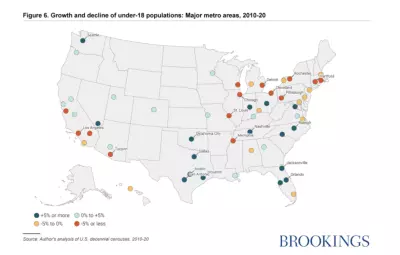
These cities are also reflected in the above map depicting the growth and decline of the population of people under 18 within US metros. The places with growth rates of 5% or more include some earlier mentioned metros like Austin, Nashville, Orlando, Houston, and Raleigh, while cities experiencing declines of 5% or more are scattered across the industrial Midwest including Milwaukee, Detroit, Chicago, and St. Louis, all cities which were listed as having some of the highest segregation indexes out of U.S. metros per the 2020 census.
This is not a new trend. Going back to the period 2000-2010 the Population Bureau Reference bureau in a 2011 release of census data observed that: “U.S. cities with high levels of growth and new construction tend to be less segregated,” and, “segregation persists in older cities in the Northeast and Midwest where a large share of the nation’s African American residents live, “buttressed by a history of poor race relations and continuing discrimination,” while, “metro areas in the South and West tend to have more mobile populations, fewer Blacks, and sometimes no long-established Black community.
The difference is easy to see in a short drive through Milwaukee or Detroit where there are starkly Black and starkly white neighborhoods that you don’t see to nearly the same extent driving in places like Tucson or Las Vegas.”
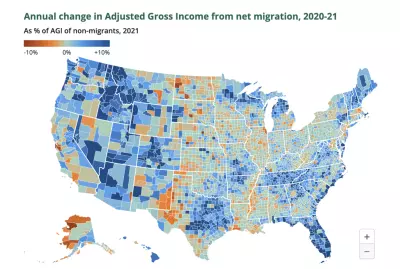
The Economic Innovation Group’s analysis reflected in the map above also shows the places experiencing the largest growth of higher-income earners tend to be centered throughout the sun belt. Meanwhile apart from Northern Great Lakes and New England lifestyle communities, the heartlands regions of the North and Midwest continue to lose this demographic.
A painful irony for the Midwest (and worry for our country) is that just as the economic dynamics may favor new economic opportunity (and a new economic storyline) for many Midwest communities based on unique assets (like universities, an outdoor lifestyle, or even small-town charm and a simpler, saner quality of life), the lingering realities of segregation and discrimination may be off-putting to those who can help deliver on that opportunity.
And the longer some Midwest industrial communities continue in decline, losing residents, losing tax base to provide basic services, seeing diminishing job opportunities, and degraded community physical conditions — the more angry, resentful working-class white residents become. This in turn finds them increasingly intolerant and easily whipped to resentment of immigrants or people of color as somehow getting something (like government benefits or job opportunities) at their own expense. Residents of once mighty, but today in decline, heartland communities remain responsive to the polarizing political movements that threaten our democracies from within.
If Midwestern communities cannot come together, acknowledge, and treat our race-driven Achilles heel, then our own economic future, as well as the political future of our nation, remains imperiled.
John Austin Directs the Michigan Economic Center and is a Nonresident Senior Fellow with the Brookings Institution
Marwan Mikdadi of the University of Michigan contributed to this article.

